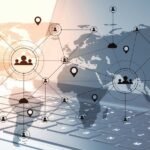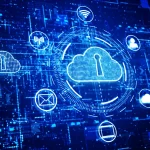What is Information Technology Explained
In today’s interconnected world, Information Technology (IT) plays a vital role in shaping various aspects of our lives, from communication and entertainment to business and education. But what exactly is Information Technology, and how does it work? In this blog post, we will delve into the world of IT, exploring its definition, key components, and its pervasive influence on society.
Defining Information Technology
Information Technology, often abbreviated as IT, refers to the use, development, and management of computer systems, software, networks, and electronic data to process, store, transmit, and retrieve information. It encompasses a broad range of technologies, practices, and disciplines that enable the effective use of information for various purposes.
Key Components of Information Technology
- Hardware: IT relies on a wide array of physical components, including computers, servers, networking equipment, storage devices, and peripheral devices like printers and scanners. Hardware forms the foundation of IT infrastructure and provides the necessary resources to run software and store data.
- Software: Software comprises programs and applications that enable users to perform specific tasks or functions. This includes operating systems, productivity tools, databases, web browsers, and specialized software for various domains such as graphic design, accounting, or customer relationship management (CRM).
- Networks: Networks form the backbone of IT infrastructure, facilitating communication and data transfer between devices and systems. Local Area Networks (LANs) connect devices within a limited area, such as an office, while Wide Area Networks (WANs) connect geographically dispersed locations. The internet itself is a global network that enables worldwide connectivity.
- Data Management: IT involves the storage, organization, and retrieval of data. This includes databases, data warehouses, and data management systems that ensure data integrity, security, and availability. Effective data management is essential for decision-making, analytics, and supporting business operations.
- Cybersecurity: With the increasing reliance on digital systems, cybersecurity has become paramount. IT professionals employ security measures and technologies to protect networks, systems, and data from unauthorized access, breaches, and other cyber threats. This includes firewalls, encryption, access controls, and regular security audits.
The Impact of Information Technology
The influence of Information Technology is far-reaching and pervasive. Here are some key areas where IT has transformed various aspects of society:
- Communication: IT has revolutionized communication, providing us with instant and seamless communication channels like email, instant messaging, voice and video calls, and social media platforms. It has enabled global connectivity and transcended geographical boundaries, connecting people and businesses across the world.
- Business and Commerce: IT has reshaped the way businesses operate, enabling streamlined processes, efficient workflows, and enhanced productivity. E-commerce platforms have facilitated online shopping, while enterprise resource planning (ERP) systems integrate and automate business operations. IT also plays a crucial role in marketing, customer relationship management, and data analytics for business intelligence.
- Education and Learning: IT has transformed the education landscape, offering digital learning platforms, online courses, and virtual classrooms. It provides access to a wealth of educational resources, promotes interactive and personalized learning, and expands educational opportunities for individuals worldwide.
- Healthcare: Information Technology has revolutionized healthcare delivery, improving patient care, diagnostics, and medical research. Electronic Health Records (EHRs) centralize patient data, enabling seamless access and collaboration among healthcare professionals. Telemedicine and remote monitoring technologies allow for virtual consultations and personalized healthcare services.
- Entertainment and Media: IT has significantly impacted the entertainment industry, from online streaming platforms and digital music services to video games and virtual reality experiences. It has changed the way we consume and interact with media, offering personalized recommendations and immersive entertainment options.


































